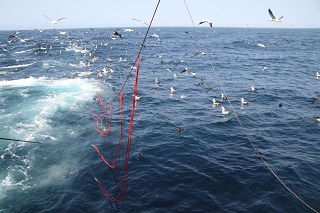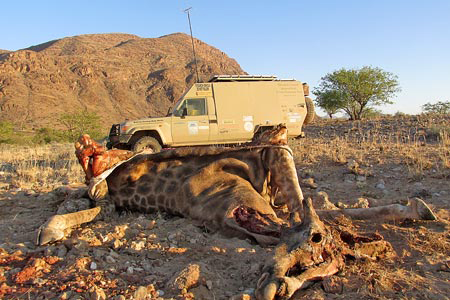
Seabird deaths in the Namibian demersal zone reduced by 98% – report

A recently published paper in the Biological Conservation journal shows that seabird deaths in the Namibian demersal zone have been reduced by 98% thanks to effective government regulation and dedicated grass roots engagement with the industry.
According to the Namibian Albatross Task Force, bycatch, which is the capture of non-target species in fisheries, remains one of the biggest threats to seabirds, especially albatrosses, some of the most striking but most threatened birds globally.
The Task Force established the scale of seabird bycatch in the riskiest fisheries, which found that Namibian hake fish were found to be among the world’s deadliest fisheries for seabirds: estimated at 30,000 birds killed each year, including the threatened species like the Atlantic yellow-nosed albatross and white-chinned petrels.
Since establishing the scale of the issue, the Task Force has worked with the fishing industry on-board to demonstrate so called ‘mitigation measures’ like bird-scaring lines – simple ‘scarecrow’ type rope lines paid out behind the vessel that scare birds away from baited hooks or dangerous trawl cables. After many thousands of hours at sea and in ports building support for these measures and the importance of protecting seabirds, in 2015 the team were successful in advocating for fishery regulations requiring the use of mitigation measures by law.
These news meant that bird-scaring lines were used across the fleet, and the new study demonstrates just how effective the potent combination of grass roots engagement and solid regulations has been.
Samantha Matjila, the Namibia Team Leader of the Albatross Task Force with the Namibia Nature Foundation, reflected on the success of a drop in bycatch such a huge amount in Namibia.
“Our waters are crucial for many globally threatened seabirds – to think that our collaborative efforts with all the vessels and the fishery managers have resulted in more than 22,000 birds being saved every year is something special. With the right levels of government investment and support, we hope that low levels of bycatch can be sustained long into the future, and that Namibia can serve as a marine conservation inspiration at a time when it is sorely needed,” she said.
The next step is to make sure that the approaches developed by the Albatross Task Force are hard-wired into the long-term management of the fishery. Albatrosses are very long-lived birds (some species breed into their 60s), so conservation efforts need to be sustained over time.
Titus Shaanika, Senior Albatross Task Force Instructor in Namibia, said the industry has done a remarkable job to reduce seabird bycatch so substantially over such a short period.
“The big challenge now is to keep up those hard-earned reductions, and to wear them as a badge of honour – we can and we must do more of this across the world if we want turn the tide on biodiversity loss,” he added.
The Namibian team is the second of five Albatross Task Force teams across the world to have achieved a more than 90% seabird bycatch reduction, hot on the heels of our success in South Africa in 2014.. In the next two years the aim is to demonstrate similar reductions in Argentina and Chile, and to have made a major contribution to the improved conservation status of some of the world’s most remarkable – yet threatened – birds.












































